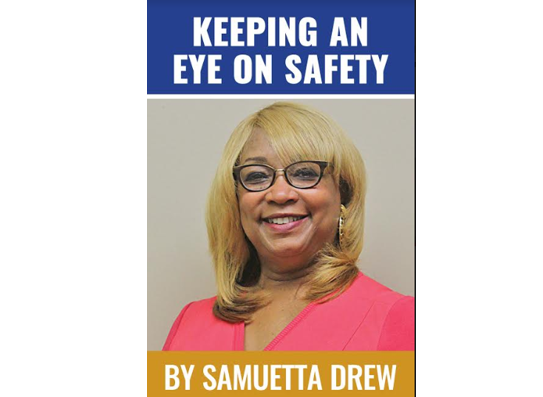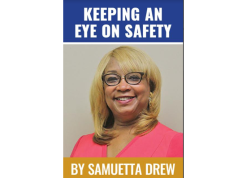By Samuetta Hill Drew
This series on wearing facial coverings (masks) for protection during the current COVID – 19 pandemic started with the initial article on July 9. The article was entitled “To Mask or Not to Mask – Is It Really a Question?” Since the onset of that article Jefferson County issued a mandatory facial covering for all citizens in public spaces along with now an extended face covering order for the State of Alabama by our governor, Kay Ivey. This latter order is in effect until the end of August.
Things have changed rapidly over the past few weeks nationwide because COVID – 19 continues to increase and spread across ages, gender, races, and economic lines. It appears more citizens are beginning to understand this is a serious and potentially deadly matter, not a hoax, but naturally you continue to have your doubters. These mandatory orders help protect everyone, even the doubters, and should help prevent the spreading of this virus.
Last week we discussed the various types of fabrics that are best to purchase or make facial coverings from and why. This week’s article will continue to discuss this topic.
I have seen several individuals opting to wear different types of bandanas. The mandates allow individuals to wear them, but they are not necessarily the best option for protection from the COVID – 19 droplets and aerosols. A study from a group of engineers at Missouri University of Science & Technology (S&T) tested bandanas, pillowcases, and furnace filters for face coverings. Out of these items tested, bandanas performed the worst. This should not be surprising because bandanas are generally made out of fabrics that are loosely woven, thus allowing easy access for aerosols to pass through.
Knit fabrics are not recommended either for face coverings. Knit materials tend to stretch and do not make for the best protection. An old t-shirt will not do the trick, but it could be good for someone who has a harder time breathing. It will offer less protection, but a study shows that it was easier to breathe through compared to other materials.
Some are deciding to place filters inside their homemade masks for an extra protective layer. Some masks for sale have an additional pocket for a filter. This concept is not a bad one, but it does pose some possible safety risks depending upon the type of filter being used and how.
Certain types of household filters contain fiberglass which can be dangerous if inhaled. 3M has a warning on its website not to use its filters for face masks. Some examples of mask filters include vacuum bags, air filters, coffee filters, and unscented dry baby wipes. If you choose to use a filter it is recommended to “sandwich” the filter between the layers of fabric to minimize the inhalation of fibers. It should be noted that none of these materials have been studied for safety either. Therefore, it is vital to read the manufacturer’s label and warnings before usage.
Regardless of the type of face covering for you and your love ones, it is important that the covering/mask fits snugly to your face. The fit is a major factor. It should always cover your nose and mouth with no gaps if possible. Any space between your face and the mask is a potential entry spot where a virus could pass through.
As you make the decision on the type of face covering to wear so you can Keep an Eye on Safety during the COVID – 19 pandemic, it is important to note that wearing something is better than not wearing anything at all!





